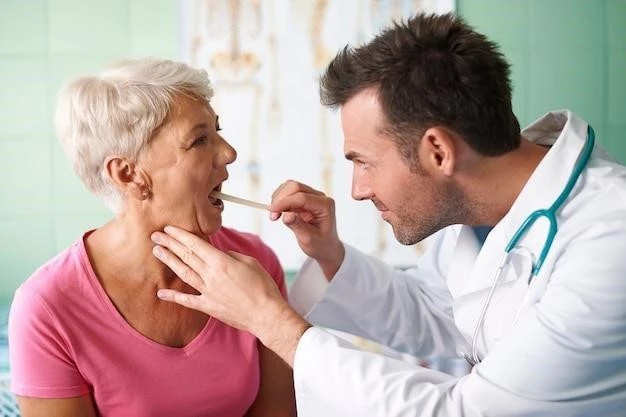Overview of Papillon–Lefèvre Syndrome
The Papillon-Lefèvre Syndrome (PLS) is a rare genodermatosis with autosomal-recessive inheritance. It is characterized by palmoplantar hyperkeratosis.
Definition and Characteristics
Papillon-Lefèvre syndrome (PLS) is an autosomal recessive disorder characterized by palmoplantar hyperkeratosis and aggressive periodontitis, leading to the premature loss of deciduous and permanent teeth. It is a rare genodermatosis with an estimated prevalence of one to four cases per million individuals. The syndrome is linked to genetic mutations, specifically the cathepsin C (CTSC) gene mutation, affecting enzymatic activity. The condition presents with unique dermatological and dental features, impacting the quality of life of affected individuals.
Causes of Papillon–Lefèvre Syndrome
Papillon-Lefèvre syndrome is caused by genetic mutations, specifically the cathepsin C (CTSC) gene mutation, leading to enzymatic activity deficiency.
Genetic Mutations
Papillon-Lefèvre syndrome is primarily a result of genetic mutations, specifically linked to the cathepsin C (CTSC) gene mutation. This mutation leads to a deficiency in enzymatic activity, ultimately causing the characteristic symptoms of the syndrome.
Cathepsin C (CTSC) Gene Mutation
Papillon-Lefèvre syndrome is primarily linked to the cathepsin C (CTSC) gene mutation. This genetic alteration results in a deficiency of cathepsin C enzymatic activity, leading to the syndrome’s characteristic manifestations, including palmoplantar hyperkeratosis and accelerated periodontitis.

Symptoms and Clinical Presentation
Papillon-Lefèvre syndrome is characterized by palmoplantar hyperkeratosis and aggressive periodontitis, resulting in premature loss of deciduous and permanent teeth.
Palmoplantar Hyperkeratosis
Papillon-Lefèvre syndrome presents with palmoplantar hyperkeratosis, characterized by thickening and hyperkeratotic lesions on the palms of the hands and soles of the feet. This dermatological manifestation is a key feature of the syndrome.
Aggressive Periodontitis
Papillon-Lefèvre syndrome is characterized by aggressively progressing periodontitis, resulting in the premature loss of deciduous and permanent teeth. This dental complication is a significant feature of the syndrome.

Diagnosis of Papillon–Lefèvre Syndrome
Papillon-Lefèvre syndrome is diagnosed through genetic testing to identify the cathepsin C gene mutation and thorough dental and dermatological examinations to assess palmoplantar hyperkeratosis and periodontitis.
Genetic Testing
Diagnosing Papillon-Lefèvre syndrome involves genetic testing to identify the cathepsin C gene mutation. This evaluation is crucial in confirming the genetic basis of the syndrome.
Dental and Dermatological Examination
The diagnosis of Papillon-Lefèvre syndrome involves thorough dental and dermatological examinations to assess palmoplantar hyperkeratosis and periodontitis. These evaluations play a crucial role in confirming the clinical presentation of the syndrome.
Treatment Options
Management of Papillon-Lefèvre syndrome includes periodontal therapy to address aggressive periodontitis and dermatological interventions to manage palmoplantar hyperkeratosis.
Periodontal Therapy
Treatment of Papillon-Lefèvre syndrome involves periodontal therapy to address the aggressive periodontitis associated with the condition. This therapy aims to manage and slow down the progression of periodontal disease, preserving dental health as much as possible.
Dermatological Management
The dermatological management of Papillon-Lefèvre syndrome focuses on addressing the palmoplantar hyperkeratosis. Strategies may include emollients, keratolytics, and other dermatological interventions to manage the thickening and hyperkeratotic lesions on the hands and feet.
Prognosis and Complications
Papillon-Lefèvre syndrome presents challenges, including dental complications from premature tooth loss and impacts on quality of life due to dermatological manifestations. Management is crucial for a better prognosis.
Dental Complications
In Papillon-Lefèvre syndrome, dental complications arise from the premature loss of primary and permanent teeth due to aggressive periodontitis. The condition necessitates close dental monitoring and intervention to address the dental challenges associated with the syndrome.
Quality of Life Considerations
Individuals with Papillon-Lefèvre syndrome may experience challenges that impact their quality of life, including dental issues from early tooth loss and dermatological symptoms like palmoplantar hyperkeratosis. Despite these difficulties, proper management and interventions can enhance the quality of life for those with the syndrome.
Research and Advances
Recent studies continue to investigate the pathogenesis of Papillon-Lefèvre syndrome and explore novel therapeutic approaches to enhance treatment outcomes for affected individuals.
Studies on Pathogenesis
Ongoing research focuses on elucidating the pathogenesis of Papillon-Lefèvre syndrome, aiming to uncover the immunological, genetic, and potential bacterial factors contributing to the manifestation of this rare autosomal recessive disorder. These studies play a crucial role in advancing our understanding of the underlying mechanisms of the syndrome.
Novel Therapeutic Approaches
Recent advancements in the treatment of Papillon-Lefèvre syndrome involve exploring innovative therapeutic strategies to address the unique challenges presented by the condition. These novel approaches aim to enhance patient outcomes and quality of life by targeting specific aspects of the syndrome’s pathogenesis and clinical manifestation.
